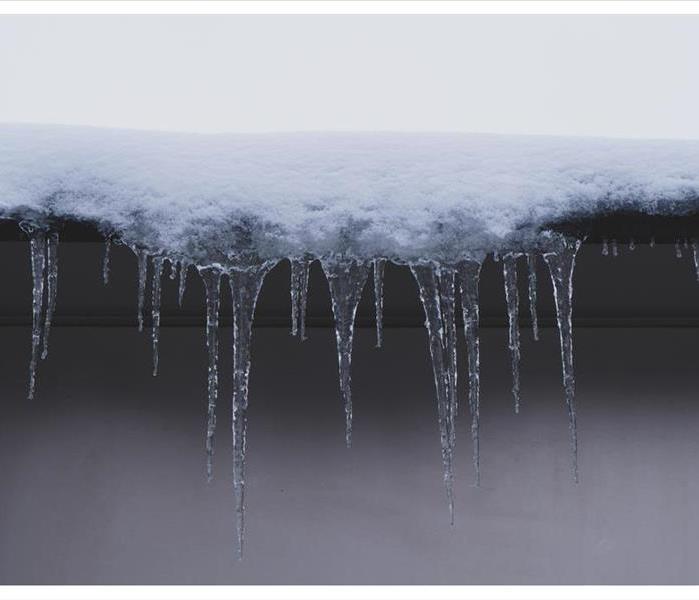How Do Ice Dams Lead to Mold?
12/4/2020 (Permalink)
How Ice Dams Increase The Likelihood Of Mold Growth
Ice dams are formed when water freezes, melts and refreezes around the eaves of a building. Water that does not go down the roof drain or gutter system of a commercial property can become an ice dam and wear down roofing and building materials over time. Find out how ice dams increase the likelihood of mold growth at a building in Alexandria, MN.
Water Contracts and Expands
Ice dams are caused by the contraction of cooling liquid water and expansion of freezing water. Property owners should know how water behaves across this critical temperature range:
- Water contracts until reaching 39 degrees Fahrenheit
- Water expands between 39 and 32 degrees Fahrenheit
- Water expands by approximately 9% upon freezing
Precipitation and snowmelt that remain on a roof can cause materials to crack or wear away and introduce moisture to lower layers of roofing and interior building materials.
Moisture Breaches the Building Envelope
When an ice dam breaches the envelope of a building, water comes into contact with water-sensitive building materials. It may be necessary to arrange for roof repair, water damage restoration and preventative drainage work.
Building Materials Become Damp
Many substances used in commercial construction are moisture-sensitive. Exposure to water degrades or diminishes the effectiveness of the following materials:
- Ceiling tiles
- Drywall
- Insulation
Absorbent materials may crumble, flake or become less effective upon getting moist. Substances that contain cellulose can support the growth of fungus, including black mold, and will need to be torn out during mold cleanup to prevent recontamination.
Improving roof drainage and attic ventilation can keep an ice dam from forming on the roof of a commercial property in Alexandria, MN. Property owners and managers should inspect the condition of a roof and drainage system prior to winter storms and monitor melting patterns to spot ice damming and try to resolve the underlying causes before structural damage occurs.






 24/7 Emergency Service
24/7 Emergency Service
